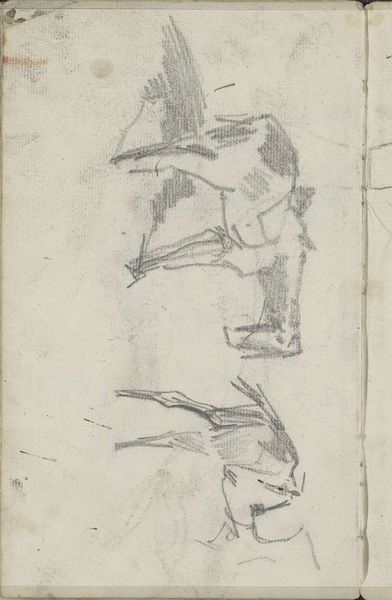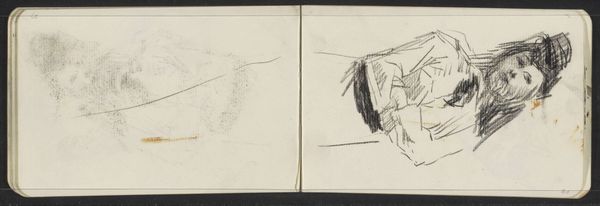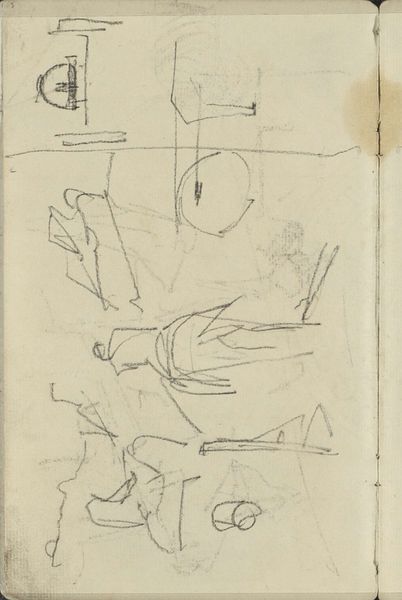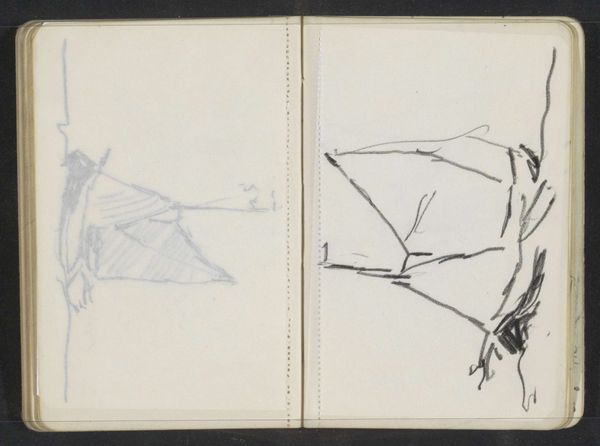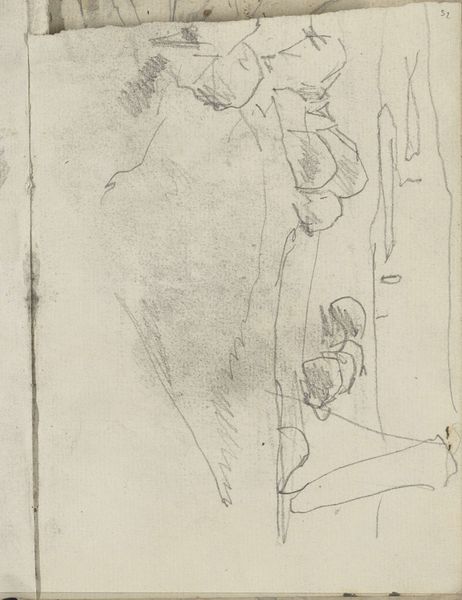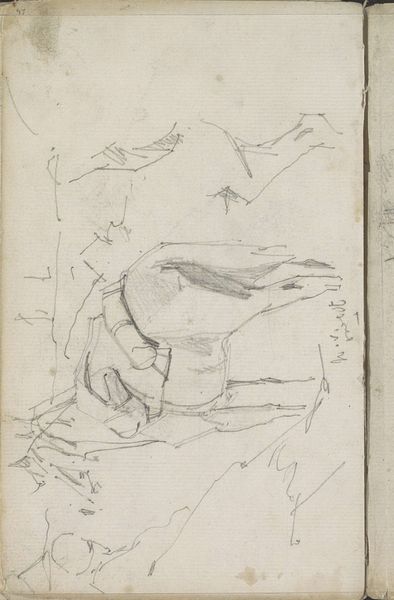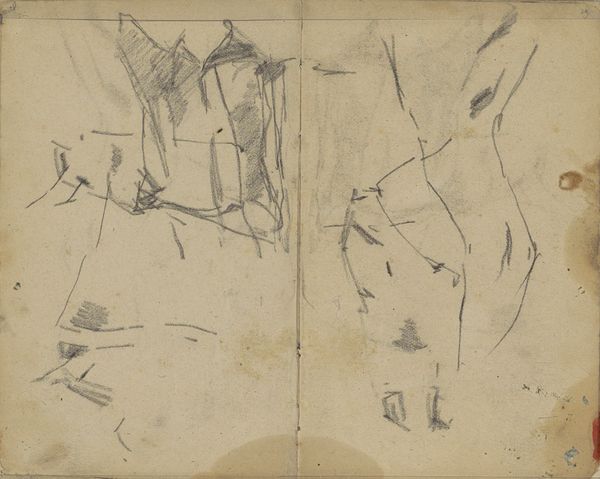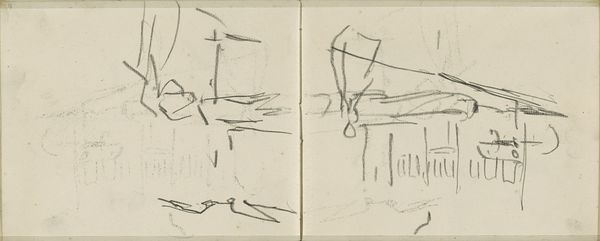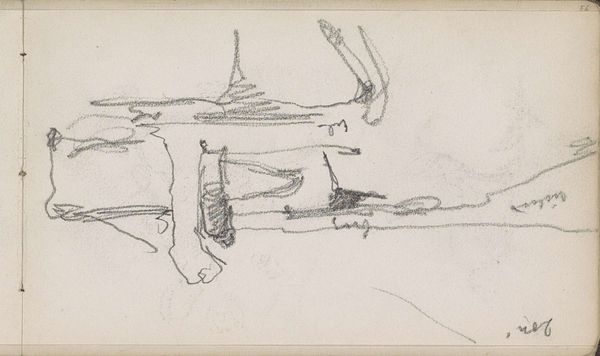
Dimensions: height 110 mm, width 358 mm
Copyright: Rijks Museum: Open Domain
Curator: Here we have George Hendrik Breitner's "Sketch of a Battlefield," a pencil drawing on paper dating between 1867 and 1923, held here at the Rijksmuseum. Editor: My initial reaction is...stark. It’s almost painful in its brevity, a series of lines that hint at carnage without actually showing it. It is impressionistic, as the artwork has been classified, but its subject also has a raw quality to it that many impressionist landscapes don’t often exhibit. Curator: Breitner was deeply affected by the Franco-Prussian War and later the First World War, even though the Netherlands remained neutral. One could say these events seeped into his consciousness, resurfacing as these minimalist, haunting scenes. Editor: Haunting is right. I mean, look at the right panel, just some faint lines suggest fallen bodies—it's chilling precisely because of what isn't there. What sort of narratives might lie behind this piece, which some might disregard as unfinished? Curator: Exactly, it reflects how war reduces human beings to mere fragments, distorted forms in the landscape. The sketch becomes a powerful commentary on the anonymity and the waste of life in battle, and is aligned to many anti-war perspectives that shaped art after the end of those armed conflicts. Editor: The looseness, the quickness of the pencil strokes... it feels like a desperate attempt to capture a scene that's too overwhelming to truly grasp. Is there any indication he intended it as a finished work, or more of a study? Curator: It’s thought to be a preparatory sketch. Breitner was more widely known for his cityscapes of Amsterdam and his photographs. Perhaps this was too painful to linger over. But its incompleteness also amplifies its power, like a trauma that can’t be fully articulated. Editor: That resonates. In some ways, this unfinished quality is perhaps its most potent attribute, it reflects our difficulty as a society of processing past atrocities and conflicts, still lingering and leaving a residue on artists’ sensibilities. Curator: Yes, sometimes the faintest strokes speak the loudest. It will remain as a solemn reminder for future generations.
Comments
No comments
Be the first to comment and join the conversation on the ultimate creative platform.

